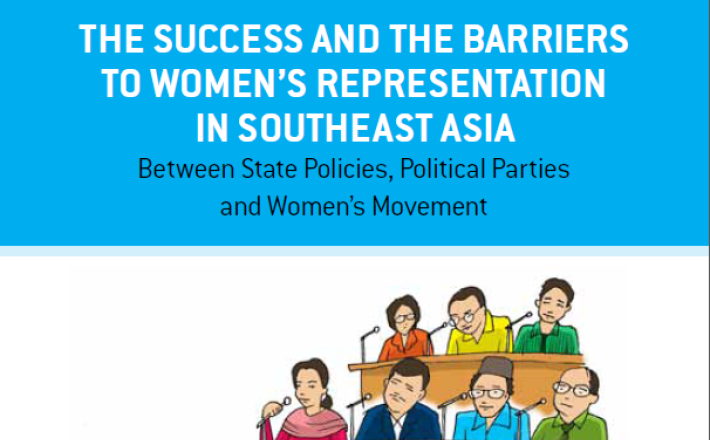The Success and the Barriers to Women's Representation in Southeast Asia: Between State Policies, Political Parties and Women’s Movement
This e-book with the title “The Success and the Barriers to Women’s Representation in Southeast Asia: Between State Policies, Political Parties and Women’s Movement” is a result of analysis of four regional researches conducted in a USAID Program called IKAT US Component 1 (“Building Sustainable Partnerships to Promote Women’s Political Representation in SEA”). The goal of the program is to strengthen women’s political rights and democracy, by advocating the promotion of better women’s political representation through regional partnership initiatives. To achieve this goal, the program has been working toward the following objectives: (1) to increase the capacity to conduct and collaborate on activities for the promotion of democracy in Southeast Asia; (2) to advocate policy frameworks towards the progress of achieving a minimum target of 30 percent women’s political representation in Southeast Asia.
This e-publication highlights the significance of women’s representation in the parliament, state’s political system and women’s representation, patriarchal system and barriers to women political participation, women’s movement for political affirmation and challenges to women’s representation.

This e-book with the title “The Success and the Barriers to Women’s Representation in Southeast Asia: Between State Policies, Political Parties and Women’s Movement” is a result of analysis of four regional researches conducted in a USAID Program called IKAT US Component 1 (“Building Sustainable Partnerships to Promote Women’s Political Representation in SEA”). The goal of the program is to strengthen women’s political rights and democracy, by advocating the promotion of better women’s political representation through regional partnership initiatives. To achieve this goal, the program has been working toward the following objectives: (1) to increase the capacity to conduct and collaborate on activities for the promotion of democracy in Southeast Asia; (2) to advocate policy frameworks towards the progress of achieving a minimum target of 30 percent women’s political representation in Southeast Asia.
This e-publication highlights the significance of women’s representation in the parliament, state’s political system and women’s representation, patriarchal system and barriers to women political participation, women’s movement for political affirmation and challenges to women’s representation.